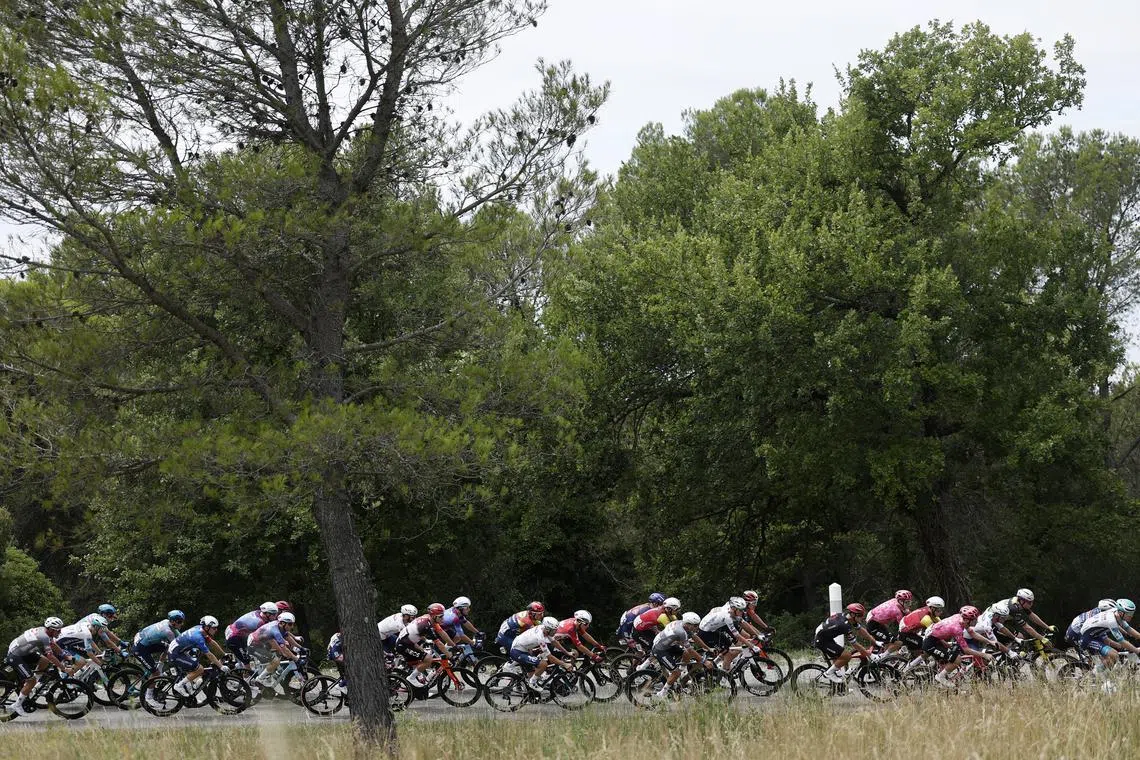Cycling’s war on hidden motors goes undercover
Sign up now: Get ST's newsletters delivered to your inbox

General view of riders in action during Stage 17 of the Tour de France.
PHOTO: REUTERS
Follow topic:
BOLLENE – The International Cycling Union (UCI) has intensified its fight against mechanical doping, employing intelligence-driven methods to combat increasingly sophisticated alleged cheating in professional cycling.
Once, inspectors relied on random X-rays and magnetic scans to catch offenders.
Now, the UCI is borrowing tactics from law enforcement – cultivating confidential sources, mapping risk profiles and monitoring bike changes in real time – to stay ahead in what officials call a technological arms race.
Mechanical doping – riders using concealed motors – first gained attention in 2016 and led to the six-year ban on Belgium’s Femke van den Driessche after a Bluetooth-controlled motor was discovered in her seat tube at a cyclo-cross event.
Since then, the UCI has expanded its detection arsenal, now employing daily checks of up to 60 bikes during the Tour de France.
All bikes have passed the checks since the Tour started in Lille on July 5.
“We have the ability... to go further with our examinations, whether that’s a partial dismantlement of the bike to look into certain components, act upon suspicions, act upon information that we have,” Nick Raudenski, the UCI’s head of the fight against technological fraud, told Reuters on July 23.
Raudenski, a former criminal investigator with the US Department of Homeland Security, took over in May 2024 and immediately pushed for a new approach.
“Bike controls, it’s something that I’ve always equated any time that I’ve done speeches or done training, it’s like throwing your hook out in the middle of a lake trying to catch fish,” he said.
“If you don’t have a strategy, if you’re not informed about how to catch fish, what time of day, what kind of fish, where you can catch fish.”
Part of that strategy is to think like the cheats.
“My idea is to put myself in the shoes of a fraudster. How would I do this and how would I get away with it? And that’s part of my background as a criminal investigator, to try to think about not what we know, but what we don’t know,” he added.
But the challenge is relentless innovation.
“It’s a bit of a technological arms race. Components are getting lighter, smaller. Easier to conceal, which is harder to detect,” Raudenski said.
“And so, trying to stay ahead of what’s potentially possible is always a challenge.”
For him, the mission is clear – keep fans believing in the sport.
“People still need to believe, at least from the technological fraud side, that they’re not climbing a stage like yesterday, and people just immediately think, ‘Oh, well, they must be on a motor’,” he said.
“Knowing that our processes are in place, that we’re conducting the controls that we’re doing, that there is that insurance that the enforcement controls that we have in place, that doesn’t happen at this level.” REUTERS

